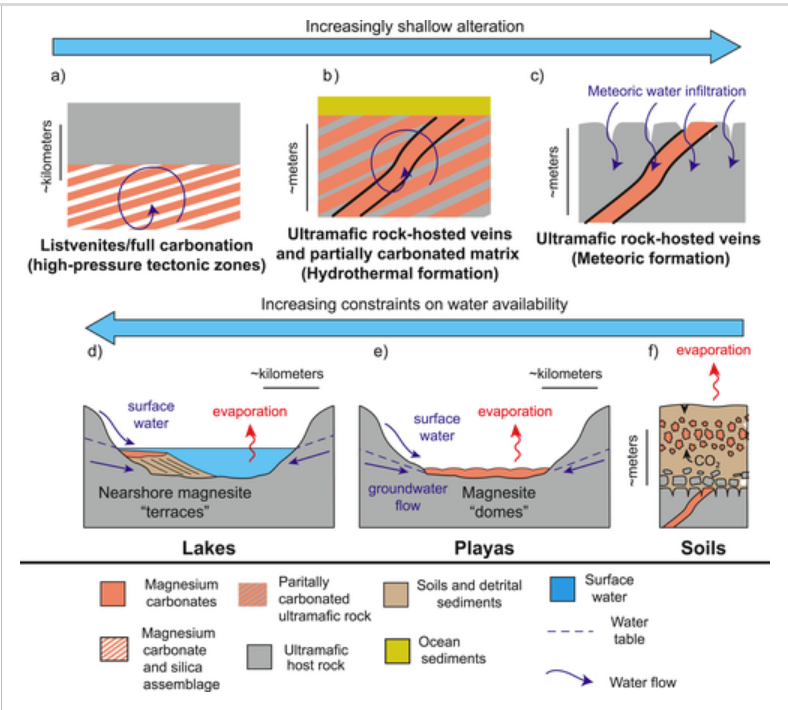Both images above are screenshots from Fig. 1 of the article Formation of Magnesium Carbonates on Earth and Implications for Mars
The green coloured regions indicate where Mg carbonates were detected, the blue lines are the fluvial channels.
About 3.9 billion years ago, the watershed to the west and north of Jezero was the source for the lake that filled the crater.
Researchers from Brown University showed that the clay minerals in the fan deposits were formed in the watershed in an earlier period and some time later another surface water activity transported them into the lake.
Some other researchers have suggested that if the early Martian climate was cold, the chemical alteration on Mars could have been largely driven by water percolating in a warmer subsurface crust, followed some time later by pulses of water on the surface.
For Jezero crater those pulses, potentially sourced by either snowmelt or rainfall, would
then have been largely responsible for the supply of the water and minerals from the watershed.
( This scenario is also supported by the authors of this article.)
Could the kind of water activities in the watershed and/or water activities inside the crater have led to the existence of caves where the olivine and Mg carbonates are located ?
Karsts on Earth are mostly formed from the dissolution of rocks such as limestone, dolomite, and gypsum, and are characterized by underground drainage systems with sinkholes and caves.
The article Carbon sequestration on Mars shows that about 20% carbonate is a likely maximum for Nili Fossae carbonate plains bedrock.( from a region located over 100 km north of Jezero crater)
The so-called "mottled terrain unit", described in this article, sections 4.1.2 and 4.2.4, is both present in the watershed and in the crater, has a spectral signature that is interpreted as representative of a mixture of olivine and Mg-rich carbonate, and is characterized by a mottled texture and a heavily degraded and exhumed appearence.
Doesn't that description of form and structure resemble that of a karst with sinkholes ?




